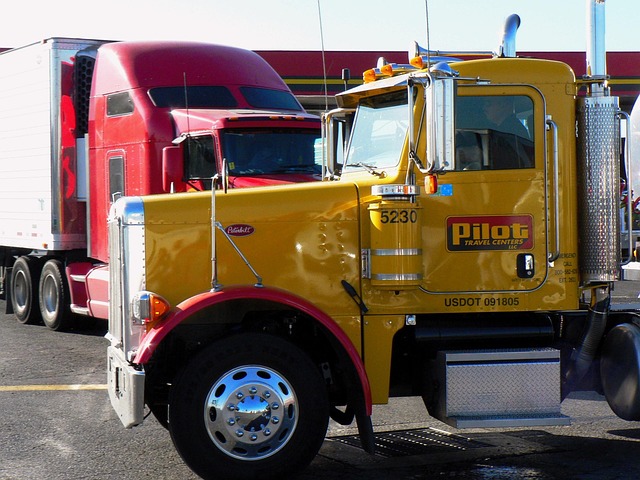Looking to register your car in California? This comprehensive guide will walk you through the process step-by-step. First, understand the state’s registration requirements, which include providing proof of insurance and paying the necessary fees. Next, gather essential documents like your driver’s license and vehicle identification number (VIN) verifier from the DMV. You can visit a local DMV office or use online services for convenience. Ensure your VIN is accurate before completing the registration application.
- Understand California Car Registration Requirements
- Gather Necessary Documents for Registration
- Visit Your Local DMV Office or Use Online Services
- Verify Vehicle Identification Number (VIN) Accuracy
- Complete and Submit the Registration Application
Understand California Car Registration Requirements

Before registering your car in California, it’s crucial to understand the state’s specific requirements. The California Department of Motor Vehicles (DMV) mandates several key steps for new and used vehicle registration. One essential component is a Vehicle Identification Number (VIN) verifier, which ensures the vehicle’s authenticity and history. This process is designed to prevent fraud and ensure safe roads for all drivers.
Additionally, the DMV requires proof of insurance, valid identification documents like a driver’s license, and payment for registration fees. For convenience, many Californians opt for mobile VIN inspection or verification services that can handle these formalities on their behalf. This streamlines the process, especially when dealing with out-of-state vehicles or those with complex histories.
Gather Necessary Documents for Registration

Before heading to the DMV for registration, ensure you have all the required documents. The process typically involves a vehicle ownership certificate or bill of sale, which confirms your purchase. This document should include essential details like the vehicle’s make, model, year, and unique identifier – the Vehicle Identification Number (VIN). It’s crucial to provide an accurate VIN; if available, use a trusted DMV VIN verifier or mobile vin inspection tool to cross-reference and ensure its validity.
Additionally, you’ll need proof of your identity, such as a valid driver’s license or state-issued ID card, and a current vehicle registration from the previous state (if applicable). Some states also require a safety inspection certificate, so check with your local DMV for specific requirements. Having these documents ready will streamline the registration process at the California DMV.
Visit Your Local DMV Office or Use Online Services

Visiting your local DMV office or utilizing online services is a crucial step when it comes to registering your car in California. The California Department of Motor Vehicles (DMV) offers both in-person and digital options for convenience. If you choose to visit an official DMV location, be prepared with essential documents such as proof of identity, vehicle registration from the previous state (if applicable), and any required fees. Staff at the DMV can guide you through the process, ensuring your vehicle’s information is accurately recorded.
For a more efficient approach, California’s DMV provides online services that include a VIN (Vehicle Identification Number) verifier. This tool allows you to check your car’s history remotely, which is beneficial for both current and prospective owners. A mobile VIN verifier or inspection can be easily accessed through the DMV’s website, making it a handy resource to verify your vehicle’s details before or during registration.
Verify Vehicle Identification Number (VIN) Accuracy

Before you begin the registration process, it’s crucial to ensure your vehicle’s Vehicle Identification Number (VIN) is accurate and legitimate. This unique 17-character code is essential for identifying your car and ensuring compliance with California’s regulations. A correct VIN is critical as it links your vehicle to its history, including any previous owners, recalls, or issues.
One effective way to verify the VIN accuracy is through a mobile vin verification service. These services allow you to use your smartphone to input the VIN and instantly receive detailed information about the vehicle. Alternatively, you can visit the California DMV website, which offers tools for conducting a vin inspection. This process is straightforward and can help prevent any potential issues during the registration procedure.
Complete and Submit the Registration Application

To begin the registration process, you’ll need to complete and submit a Registration Application form at your local California Department of Motor Vehicles (DMV) office or through their online portal. This application requires detailed information about your vehicle, including its make, model, year, and unique Vehicle Identification Number (VIN). It’s crucial to ensure the VIN is accurately recorded as it serves as a vital identifier for your car. Consider using a DMV-approved VIN verifier to cross-check this critical piece of data before submitting your application.
When filling out the form, be meticulous with all the required details. This includes providing proof of insurance, payment for registration fees, and any applicable emissions test results. If you opt for a mobile vin inspection or choose to conduct a vin inspection yourself, ensure that the information aligns perfectly with what’s on file with the DMV to avoid delays in processing your application.
Registering a car in California involves understanding state requirements, gathering essential documents, and ensuring your vehicle’s VIN is accurate. You can visit a local DMV office or utilize online services for convenience. After completing the registration application, double-check the VIN using a reliable dmv vin verifier to ensure everything is in order. With these steps, you’ll be on your way to legal California car ownership.



